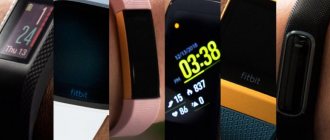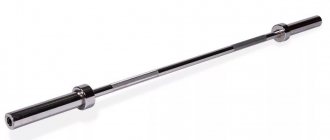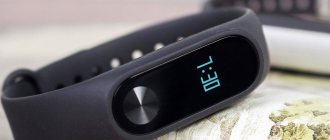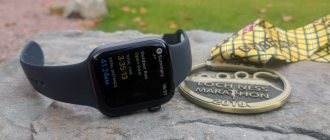1
SIGMA iD.RUN HR
Look
2
PUMA PU91129100
Look
3
Beurer PM70
Look
Heart rate monitors are modern devices that allow you to measure your heart rate without stopping your workout. For a person who monitors his health, this is an indispensable attribute of manual control.
A review of different devices will allow you to decide on the best one from a medical point of view.
Benefits of a heart rate monitor
Athletes and physically active people need to monitor the functioning of the heart muscle. A heart rate monitor will be a good helper in this. The device allows you to maintain the required heart rate, find out the number of calories burned and select the appropriate load for training. The heart rate monitor is used when performing interval and cardiological exercises. The device will come in handy during strength training and daytime activity.
Pros of a heart rate monitor:
- protecting the heart from overload thanks to heart rate control;
- assistance in adjusting the focus of training (endurance or weight loss);
- tracking progress followed by analysis of the load and its impact on the body;
- accurate calculation of calories burned;
- Possibility of use to assess the functioning of the cardiovascular system.
Many exercise machines are equipped with a built-in heart rate monitor. Such devices provide inaccurate information, and to record readings you need to hold on to the handrails of the equipment, which is not always convenient.
Garmin Forerunner 935 sports watch
Unlike Polar, Garmin has always specialized in working with GPS, which could not but affect the functionality of their devices. The Garmin Forerunner 935 is practically an on-board computer that can take weeks to learn. At the same time, the watch is light (49 g) and stylish, it looks good even under a suit.
Without recharging, the watch lasts up to 2 weeks, and charges in just an hour and a half. With continuously working GPS, they will last for as long as 24 hours, and in economy mode – up to 50 hours.
FR 935 are equipped with a Wi-Fi module and a barometric altimeter. The heart rate monitor is optical; heart rate is measured around the clock every 2 seconds, making it convenient to work with heart rate zones during training - the watch warns you when you leave the desired zone. The same data is used to calculate HRmax, HRR and recovery time.
Using analytics in Garmin Connect, you can find out your lactate threshold, recommended exercise level, functional power threshold, and even predict your results in competitions. There is an opportunity to work out with a virtual “partner” or compare results with real people, as well as a paid option for contacting a trainer.
A participant of the 2017 Moscow Marathon wrote in his review about how to use the Garmin Forerunner 935 to prepare for a marathon and during the distance.
There are a lot of possibilities for running - from customizing watch faces and widgets to measuring cadence and step frequency. You can even control your music on your phone!
Learn more about Garmin Forerunner 935.
Basic functions of the heart rate monitor
Main options:
- monitoring heart rate (heart rate);
- heart rate range adjustment;
- notification of zone change by sound or vibration signal;
- calculation of average and maximum heart rate;
- calorie burn counter;
- timer, stopwatch, time and date.
Some models have additional functionality (pedometer, navigation with GPS, workout memory, alarm clock, synchronization with a smartphone). The price of the device largely depends on its “filling”.
Types of heart rate monitors and their features
Heart rate monitors are conventionally divided into 2 broad categories: chest and wrist options. The first devices provide accurate results and are in demand among athletes and fitness enthusiasts. With the introduction of new technologies, it has become possible to measure heart rate with compact and convenient devices that are fixed on the wrist.
Wrist heart rate monitors.
Heart rate monitor with chest strap for running and strength training
A device of this type is equipped with electrodes and is attached to the chest, transmitting information to a receiver in the form of a watch or through a mobile application. In the first case, information is processed after receiving the corresponding impulses and displayed on the screen. On the street, such modifications are more convenient because they do not require the use of a smartphone. There are 2 options for data transmission (via an analog uncoded or digital channel).
Wrist heart rate monitors
The device on the wrist is convenient because the user does not need to wear a chest strap with a sensor. The device resembles a wristwatch and can work in 2 ways. In the first, the pulse is measured during contact between the finger and the sensor. It is enough to put the device on your hand, touch it and find out the heart rate value. The disadvantages include the inability to control the pulse without contact between the finger and the electrode. Main uses: tourism, rock climbing, medical prescriptions.
In the second case, heart rate is measured by monitoring the circulatory system. The bracelet is placed on the hand, LEDs scan the skin, and an optical sensor records the narrowing of blood vessels, displaying the value on the screen. The downside is that you need to fasten the strap tightly, which is uncomfortable during exercises.
Fitness bracelets with heart rate monitor and other functions
Trackers (for example, the Xiaomi Mi Band 2 bracelet) are aimed at non-professional athletes. They are suitable if accurate heart rate readings are not required, but there is a desire to control the training process to achieve the desired results. The device is lightweight, compact and has a thin body.
A heart rate monitor is cheaper than its optical counterparts and allows you to track approximate heart rate zones, number of steps, and quality of sleep. Almost every fitness bracelet has a pedometer and a motion sensor. The accuracy of blood pressure measurement is conditional.
Smart watch with pedometer and heart rate monitor on hand
This hand sensor is convenient and does not require additional devices. Smart watches are equipped with a heart rate monitor and a pedometer, suitable for amateur sports and training in fitness rooms, and used by people with cardiovascular diseases. The disadvantage is that they require constant synchronization with a smartphone (Android or iOS).
Watch with step meter.
Compact and accurate finger heart rate monitor
This device calculates heart rate from pulsating blood in the finger. The advantage of the device is that it does not require attachment to the chest or wrist, and is ultra-compact in size. The device operates on the following principle: information is quickly transmitted to the display, showing the pulse during physical activity. Additional functionality includes an indicator of blood oxygen saturation, air temperature, stopwatch, and clock. The wireless device is equipped with a fullness regulator, suitable for users of any size.
Garmin Fenix 5 sports watch
If even the most advanced functionality is not enough for you, and finances allow it, then you should think about a premium watch - such as the Garmin Fenix 5 with a stainless steel case and sapphire crystal. They are like a luxury car: they can do a lot of things, are incredibly comfortable to use and will make the right impression on business partners.
We are, however, interested in their “professional” sports capabilities. This model differs little from the Forerunner 935 - except that the Fenix 5 has more functions for tourism. This Garmin model also supports ANT+ and allows you to connect third-party sensors. Both the Garmin Elevate optical heart rate monitor and GPS navigation work great.
Water resistance is 10 ATM, so you can swim and dive. As for autonomy, in Fenix 5 smartwatch mode there are 336 hours, with GPS always on - 24 hours, and in Ultratrack saving mode - 75.
If you train in the city, choose the basic model of Fenix 5, if in nature, then the support for topographic maps and the ability to plot a route on versions 5X and 5S will come in handy.
Learn more about Garmin Fenix 5.
Arm heart rate monitor or chest sensor, which is better for running training?
Comparative characteristics of both devices:
- Accuracy of readings. The chest heart rate monitor responds faster to the contraction of the heart muscle, reflecting its work on the monitor. The wrist sensor provides somewhat distorted information, since the information is read after the blood reaches the hand, having a different density. The device does not have time to react to the load in the first seconds of exercise after rest.
- Ease of use. Chest devices are uncomfortable because... Belt friction causes discomfort, especially in hot weather. This element absorbs the athlete's sweat, acquiring a persistent unpleasant odor. Heart rate monitors worn on the arm do not have all these disadvantages.
- Additional functionality. The belt device has the option of recording a track, Bluetooth or ANT+ support. Most wrist models do not have such capabilities.
- Power element. A chest gadget with a belt can function without recharging for several months. Arm modifications require refilling every 6-10 hours.
From the comparative analysis it is clear that for amateur jogging and training runners, a wrist-based device is better suited, despite the errors reported.
Running Coach Tips
When purchasing a watch to help you with your workouts, first think about how you are going to use it. Running coaches say: “If you run marathons and spend four hours a day on the treadmill, consider a watch with battery functionality. If you exercise a lot and running is just one of several exercises you do at the gym, then a fitness watch may be more suitable. If you're into music, consider a brand that lets you play music from your watch without having to carry your phone."
If trails and ultramarathons are more your thing, we recommend looking at a watch with an altimeter function: “When you're running around a mountain, the altimeter can tell you that you're at 800 meters. This is an important indicator when you are not training at home, because not all kilometers are the same.” However, beware of watches that are overloaded with features you won't need. “Pay attention to whether the watch is easy to use. I say this - if my mom can figure it out, then it's a good litmus test for a running watch."
“Finally, enjoy the ecosystem you are buying into. Each brand has its own way of posting data online, which is usually free to try. And you will definitely find something to your liking.”
How to choose a heart rate monitor: models with GPS and tracking function
Any heart rate monitor is a highly targeted device focused on heart rate control. It allows you to track your pace and adjust the loads used. Budget models are also equipped with a pedometer, clock and stopwatch.
More expensive devices have tracking and GPS functions. Such gadgets are needed by athletes who want to know the speed to which they accelerated during exercise, and also adjust the training based on the maps stored in the device’s memory.
Sports watch Polar M430
Of course, it is best to combine the readings of a watch and a full-fledged heart rate monitor, but the benefits of a built-in wrist heart rate monitor are difficult to overestimate. If the V800 comes in conjunction with the H10, then in the case of the M430 let’s remember about the OH1.
The devices share the same optical heart rate monitor, the most accurate in its class and developed by Polar. Heart rate tracking occurs 24/7. The model weighs only 51 grams, and the charge lasts about 10 days using GPS for training 2-3 times a week.
The Polar Flow ecosystem supports about 100 sports profiles and contains training programs for races of 5, 10 km, half marathon or marathon, scheduled for every day for 2-3 months.
In the app, you can create your own training plan and track progress using analytics and Running Index and Polar OwnIndex - indicators that reflect aerobic running efficiency and maximum oxygen consumption (VO₂max), respectively.
Users have access to several GPS accuracy modes, interval training, as well as analytics of sleep duration and quality and planned recovery time after exercise.
The Polar M430 is a very functional, but affordable (especially compared to other models) watch that is tailored specifically for runners.
Read more about Polar M430.
Rating of the best heart rate monitors on the wrist
The review of wrist-based heart rate monitors presents several popular modifications from trusted manufacturers. Gadgets are in demand on the market and differ in shape, parameters, price and additional functionality. Both professional versions and devices for cardio loads and amateur athletes are indicated.
Honor band 3
Characteristics and functionality declared by the manufacturer:
- tracking calories burned and steps;
- control of sleep phases;
- heart rate measurement in 3 modes (training, current, forced);
- notification of all changes in the course of classes;
- alarm;
- settings for sports (running, swimming);
- monochrome screen (0.91 inches);
- bluetooth 4.2;
- AB 100 mAh;
- dimensions - 10.3/16.5/43 mm;
- weight - 18 g;
- water resistance - up to 50 m.
The device is available in 3 colors, fits perfectly on the hand, there are many adjustment holes on the strap, and the latch has a double configuration.
Honor band 3 bracelet.
Tomtom spark 3 cardio music
This heart rate monitor is suitable not only for runners and swimmers, but also for skiers who don’t mind listening to their favorite music while exercising.
Options:
- measured indicators - number of steps, distance traveled, sleep monitoring, calories burned;
- internal memory - 3 GB;
- headphone jack - A2DP and AVR;
- playable music formats - AAC and MP3;
- weight - 50 g;
- The heart rate monitor with GPS works without recharging for up to 11 hours, while listening to tracks - up to 5.
Depending on the type of sport, the gadget displays preloaded routes, trajectory, and speed.
Heart rate monitor Tomtom spark 3 cardio music.
Garmin vivoactive hr
Among the features of the hybrid smartwatch and fitness bracelet are a color transreflective monitor, GPS and a constantly functioning heart rate sensor. The body of the device is protected from water, and the original software includes several modes (running, cycling, swimming, golf). The functionality of the gadget is wider than that of standard trackers with a pedometer.
Characteristics:
- strap - removable type in 2 sizes;
- Battery life: up to 5 days;
- weight - 47.6 g;
- altimeter, heart rate sensor 4.0;
- protection against water - up to 5 atm.
Garmin vivoactive hr bracelet.
Nokia steel hr
The sports heart rate monitor for the wrist is made in 2 colors (black and white), a couple of sizes in diameter (36 and 40 mm). The smart watch is lightweight; the silicone strap does not cause discomfort when wearing or running. The device is packed with all sorts of functionality, including a counter for steps and calories burned, sleep monitoring, and 24-hour heart rate measurement. The heart rate sensor works exactly as for wrist modifications. The design provides a running mode, recording the distance traveled and heart rate zones. The readings are displayed on an electronic monitor.
Nokia steel hr heart rate monitor.
Polar v800 gps
This brand is included in the TOP of the best wrist heart rate monitors. The device is made of metal, the strap is made of rubber, the color range is 3 shades (red, black, blue). The functionality is controlled using 5 buttons. The number of screens is 8, each can display up to 4 indicators. The device is configured via a computer. The watch notifies you of heart rate zones, exercise pace, and the end of an interval via a sound signal or vibration.
There is a function that allows you to mark a circle by tapping on the device. On a bicycle, it is better to disable this option to avoid spontaneous activation due to shaking. Additions - an altimeter for measuring height, displaying the inclination angle.
Polar v800 gps bracelet.
Beurer pm25
Functionality:
- heart rate fixation;
- time and date;
- alarm about exceeding training load limits;
- stopwatch;
- adjustment of heart rate zones;
- energy saving;
- backlight;
- class diary.
The wrist heart rate monitor is suitable for running, including CrossFit, telling the athlete when to pick up or slow down.
Beurer pm25 bracelet.
Smart watch Polar V800 H10
If you want a watch for serious running and an equally serious chest heart rate monitor, we recommend choosing the Polar V800, as it is a combination of a great watch and the H10, no compromises.
The watch is shock-resistant and the glass is scratch-resistant, perhaps even more so than the premium sapphire displays on top-end Garmins. Yes, the V800 is inferior to other models (and even the younger M430) in terms of black-and-white screen resolution, but this is compensated by an excellent viewing angle and battery life - the watch holds a charge for up to 30 days.
The device is ideal for triathletes. Firstly, the watch is not afraid of water (neither open water nor a swimming pool) and thanks to H10 it correctly displays your heart rate. Secondly, the firmware allows you to combine several sports in one training session, changing modes with the press of one button.
Thanks to the built-in altimeter, you can also determine the ascents and descents of the distance. The function of returning to the desired point is available, which is useful in everyday life.
In the Polar Flow app or its desktop version, you can find out the maximum pace, cadence and load level for each workout, as well as receive motivating information about the effect of the exercise. In addition, V800 owners have the opportunity to regularly conduct a Vo2max test and an orthostatic test.
Polar V800 is suitable for you if you engage in cyclic sports, especially running and triathlon, monitor your aerobic threshold, calculate RR intervals and conduct serious analytics of your training.
Learn more about Polar V800.











